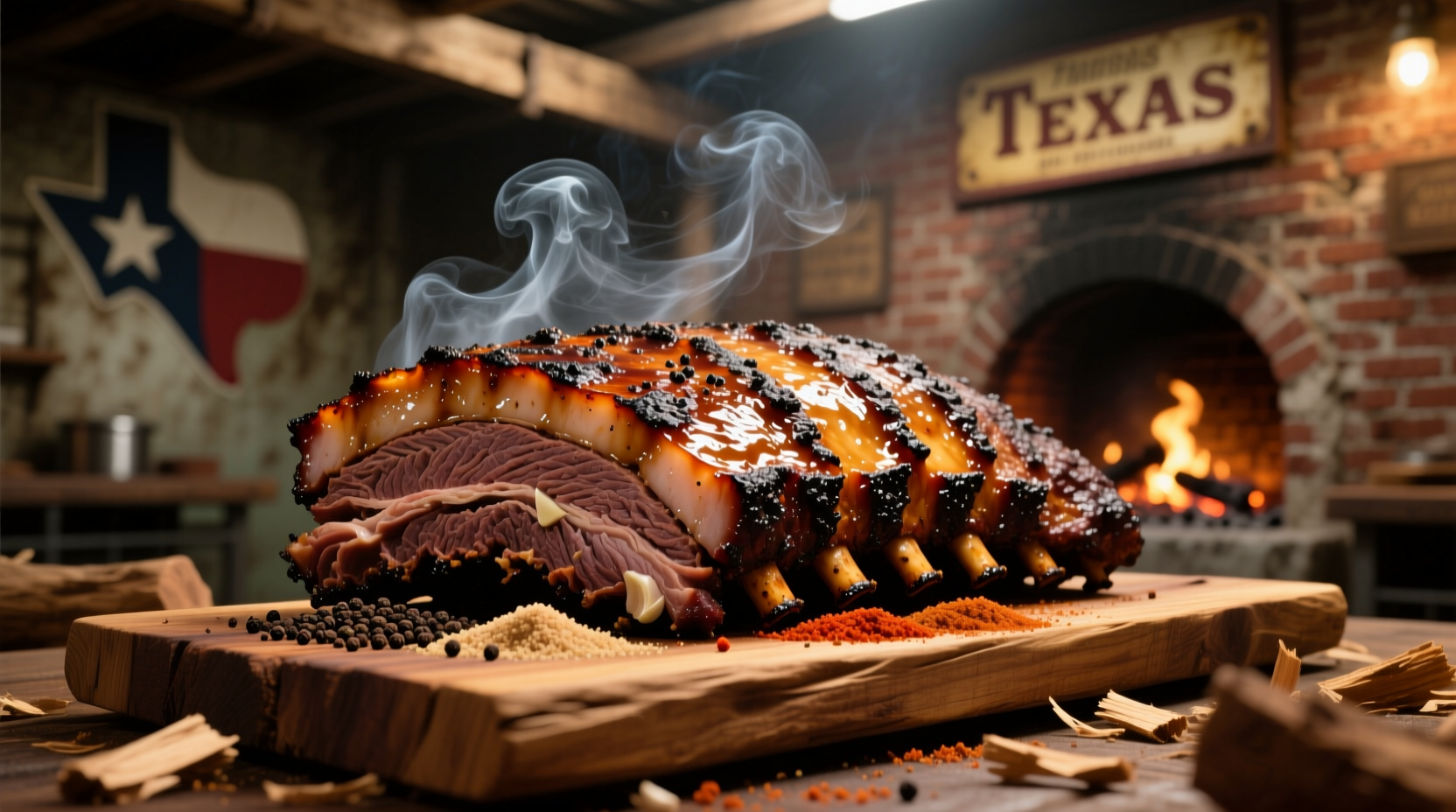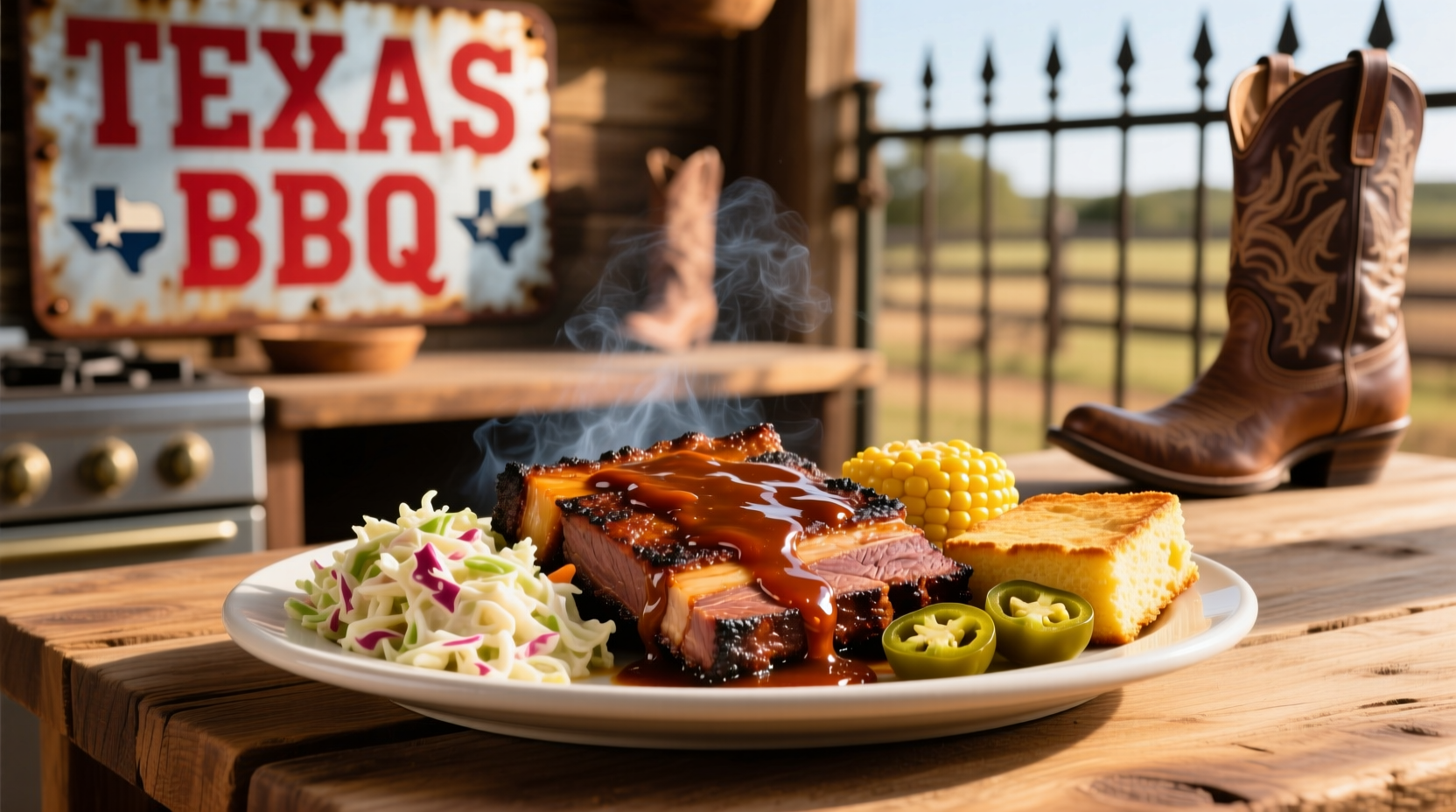The Heart and Soul of Texas Cuisine
When travelers ask what food is texas known for, they're seeking more than just a menu—they're looking for a taste of Texas culture. The Lone Star State's culinary identity reflects its diverse history, vast geography, and cultural melting pot. From the smoky pits of Central Texas to the border kitchens of South Texas, each region tells its own story through food.
Texas BBQ: More Than Just a Meal
No discussion of what food is texas known for begins without barbecue. Texas BBQ isn't just grilled meat—it's a cultural institution with deep historical roots. Originating from German and Czech meat markets in the late 1800s and influenced by African American pitmasters, Texas BBQ evolved into distinct regional styles:
| Region | Signature Style | Must-Try Item | Wood Type |
|---|---|---|---|
| Central Texas | Meat-focused, simple seasoning | Beef brisket | Oak |
| East Texas | Sweet sauce, chopped meat | Pork ribs | Hickory |
| West Texas | Mesquite-fired, cowboy style | Beef ribs | Mesquite |
| South Texas | Barbacoa, goat specialties | Barbacoa de cabeza | Live oak |
The Texas Department of Agriculture recognizes BBQ as part of the state's cultural heritage, with over 2,000 BBQ establishments statewide according to their 2023 culinary tourism report. What makes Texas brisket special is the "point-cut" technique perfected by Central Texas pitmasters, where the fatty point section renders down while the lean flat maintains structure.
Tex-Mex: Texas's Culinary Gift to the World
While often confused with authentic Mexican cuisine, Tex-Mex represents a distinct culinary tradition born from Tejano culture. The Smithsonian's National Museum of American History documents how Texas food specialties like nachos (invented in Piedras Negras, Mexico for Texas tourists in 1943), fajitas (originally ranch workers' skirt steak), and breakfast tacos became mainstream through Texas's unique cultural exchange.

Authentic Tex-Mex differs from Mexican food in key ways:
- Heavy use of yellow cheese (uncommon in Mexico)
- Flour tortillas as standard (vs. corn in most of Mexico)
- Grilled meats served with beans and rice
- Distinctive chili gravy sauces
Unexpected Texas Food Traditions
Beyond BBQ and Tex-Mex, Texas's culinary landscape includes surprising regional specialties:
Czech-Influenced Baking
In the Texas Hill Country, descendants of 19th century Czech immigrants maintain baking traditions. The Texas State Historical Association documents how kolaches (fruit-filled pastries) and klobásníky (sausage rolls) became state signature foods, particularly in towns like West, Texas, which hosts an annual Kolache Festival.
Gulf Coast Seafood Culture
Along the Texas coast, fresh seafood defines the cuisine. The Texas Parks and Wildlife Department reports that Gulf shrimp, blue crab, and red snapper have sustained coastal communities since Spanish colonial times. Don't miss authentic shrimp boats serving boiled shrimp with garlic butter along Highway 149.
Texas Food Timeline: A Culinary Evolution
Understanding what food texas is known for requires examining its historical development:
- Pre-1800s: Native American tribes (Comanche, Caddo) relied on bison, corn, and pecans
- 1820s-1840s: Mexican ranching traditions introduced beef and tortillas
- 1870s-1900s: German and Czech immigrants established meat markets and bakeries
- 1930s: Black pitmasters perfected Central Texas barbecue techniques
- 1970s: Tex-Mex cuisine gained national recognition through restaurants like Ninfa's
- 2000s-Present: Texas craft barbecue movement elevates regional styles globally
Where to Experience Authentic Texas Food
For travelers wanting to taste what makes Texas cuisine special, focus on these experiences:
BBQ Pilgrimages
Visit legendary establishments like Franklin Barbecue (Austin), Snow's BBQ (Lexington), or Kreuz Market (Lockhart). Texas Monthly's BBQ issue, published annually since 1997, remains the definitive guide to the state's best barbecue joints.
Tex-Mex Destinations
For authentic Tex-Mex, seek out family-run establishments like El Original (San Antonio) or Matt's El Rancho (Austin). Avoid chains when possible—true Texas food specialties emerge from generations of family recipes.
Seasonal Considerations
Timing matters when exploring Texas cuisine. Fall brings BBQ festivals across the state, while spring features kolache festivals in the Hill Country. Summer means fresh Gulf shrimp season along the coast. Understanding these regional Texas food specialties by season enhances your culinary experience.
Bringing Texas Flavors Home
You don't need to visit Texas to enjoy its iconic foods. Authentic Texas brisket requires patience—slow smoke at 225°F for 12-16 hours with post oak wood. For breakfast tacos, use fresh flour tortillas with scrambled eggs, house-made chorizo, and pico de gallo. The key to Texas-style chili? No beans allowed—it's a meat-centric dish perfected during cattle drive era.











 浙公网安备
33010002000092号
浙公网安备
33010002000092号 浙B2-20120091-4
浙B2-20120091-4